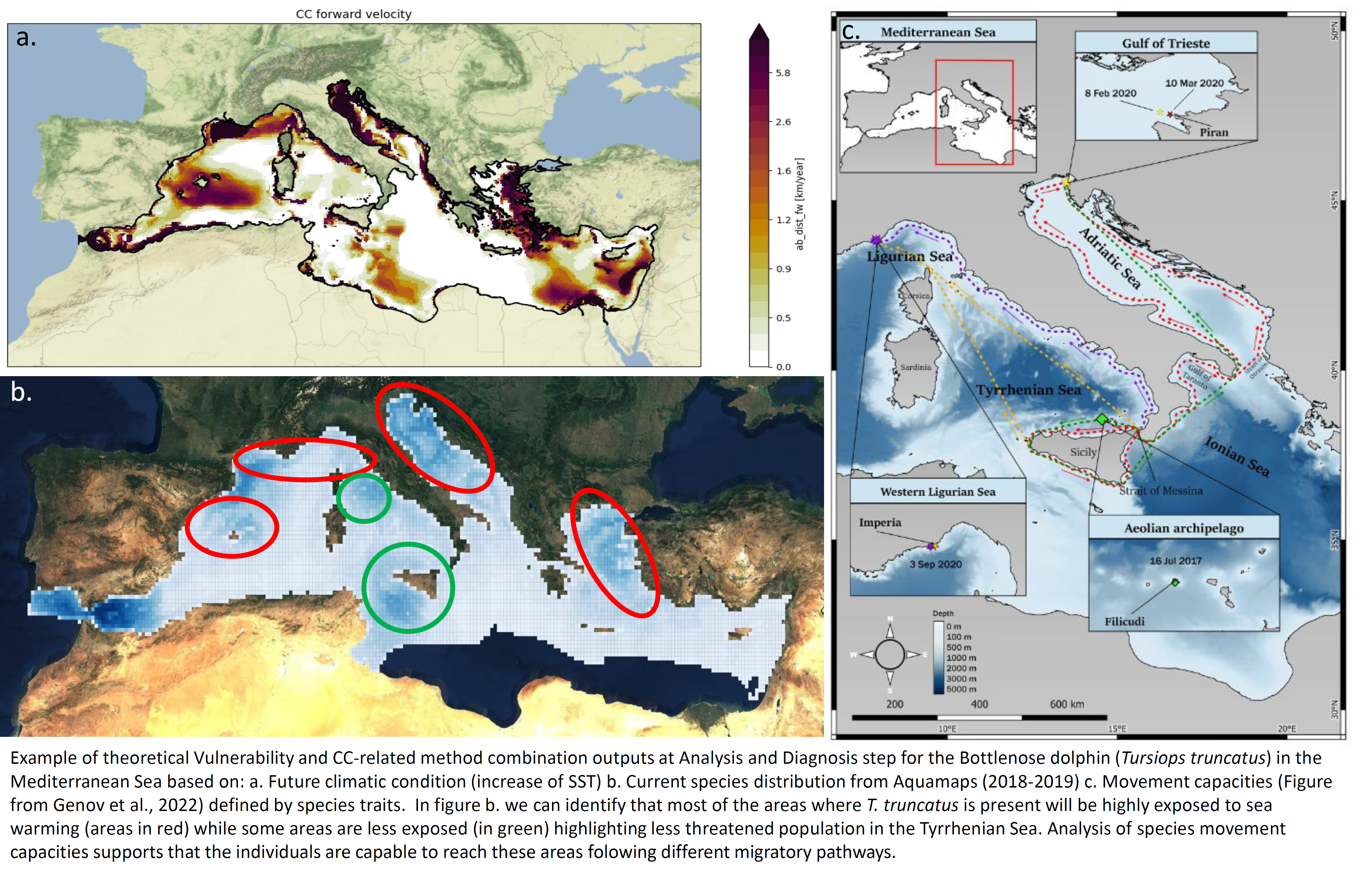Marime Mammals & CC: NW Mediterranean prioritization for 2030#

Description#
In this example, the management question reflects the managers’ need to be supported in the selection of the most accurate methodology to approach the issue and perform the analysis. The geographical and time scale boundaries were well defined by the test site representatives and linked to the biodiversity strategy for 2030, and we know that climate change needs to be considered according to the work previously done by the project partners:
Criterion 1 - Desirable spatio-temporal scale of the analysis (Highlighting the boundaries) application: Projections need to be “Near-Term” (targeting 2030) and encompass the whole Mediterranean Sea basin (so the considered stressor is mainly Sea Surface Temperature regarding actual data availability and level of knowledge about climatic stressors).
Criterion 2 - Type of output application: the expected output should be a metric that could be ranked (score or quantitative indexes) as the main purpose of the question is to compare species vulnerability to CC to prioritize targets and/or management actions for marine mammals’ conservation. Trait-based vulnerability assessment is suitable as core method as it aims to evaluate the sensitivity of each species to different stressors (including climate change stressors) and provide a metric (sensitivity score) for comparison. Moreover, a species traits’ database is available at test site scale.
Criterion 3 - Expertise/Complexity of the model application: marine mammals are highly moving species that will probably modify their repartition area before presenting the appearance of physical/trait adaptations to climate change. Moreover, near-term questions are less likely to induce evolutionary process. For these reasons, a trait-based vulnerability assessment based only on Sensitivity criteria (e.g. linked to inner traits such as moving capacities or thermal tolerance) is particularly suitable to compare the near-term answers between species and will be selected to feed the macro-criterion Vulnerability in the Analysis and Diagnosis Practices. The selection of a single criterion among the list of criteria available in the ESE platform to feed the Vulnerability macro-criterion will respect the parsimony approach (simple equation) and is considered as leading to an acceptable level of uncertainty in the literature.
Final output of the scoping: in this example, the output of the scoping will be the selection of an analysis method and metric aka the selection of Trait-based vulnerability assessment based only on Sensitivity criteria to sea surface temperature as core analysis.
Ecological toolkit (ESE1) for MPAs prioritization and networking. Deliverable – D3.4., under the WP3 of MSP4BIO project (GA n° 101060707).